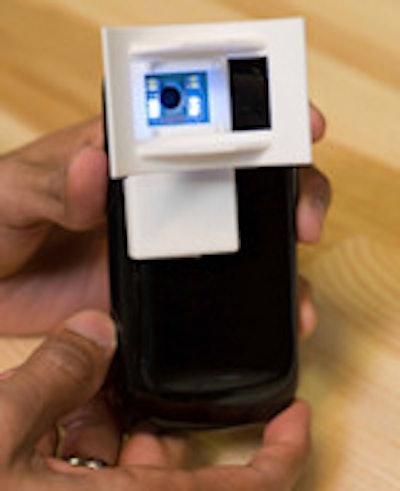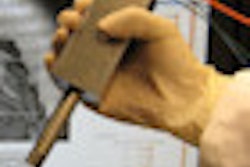
A bioengineering professor at Stanford University has developed a way to use smartphones to create images of the oral cavity and screen patients' mouths for suspicious lesions, according to a story from Inside Stanford Medicine.
Dubbed OScan, the compact, low-cost device could make it possible for millions of people who live in remote areas to get much needed diagnostic imaging earlier than is now possible, according to Manu Prakash, PhD, who invented the device.
 OScan attaches to any smartphone camera. Image courtesy of Steve Tisch, Stanford University.
OScan attaches to any smartphone camera. Image courtesy of Steve Tisch, Stanford University.
OScan consists of a mouth positioner, a circuit board, and two rows of blue light-emitting diodes. It attaches to any smartphone's built-in camera to allow an operator to quickly take a panoramic image of a person's oral cavity, according to the story.
Illuminated by the device's blue fluorescent light, malignant cancer lesions are detected as dark spots. The images can then be sent wirelessly to health workers, dentists, or oral surgeons for diagnosis anywhere in the world.
The device is designed for mass production, with an estimated material cost of just a few dollars, according to Prakash.
The OScan has undergone some preliminary field testing in India and recently won two awards from the Vodaphone Americas Foundation totaling $250,000.
Prakash and the OScan development team plan to use the award money to conduct more field testing of the device and software application in India.



















